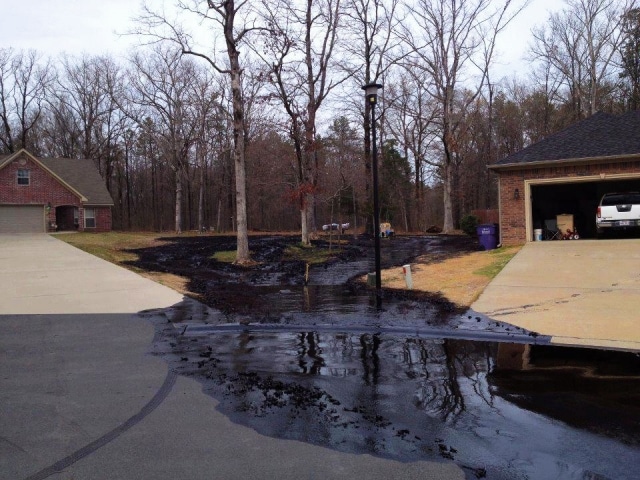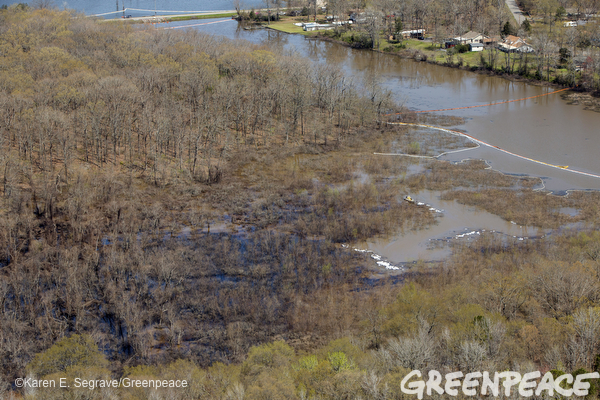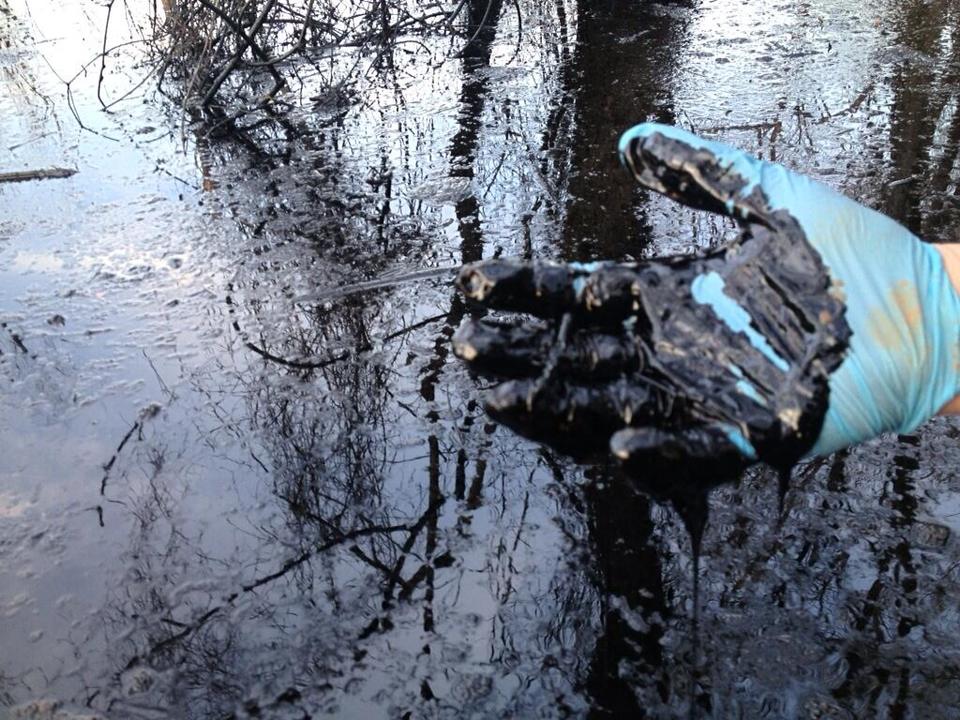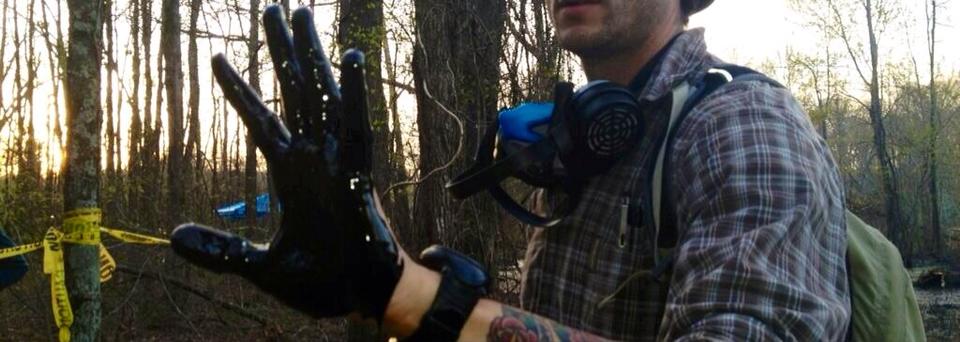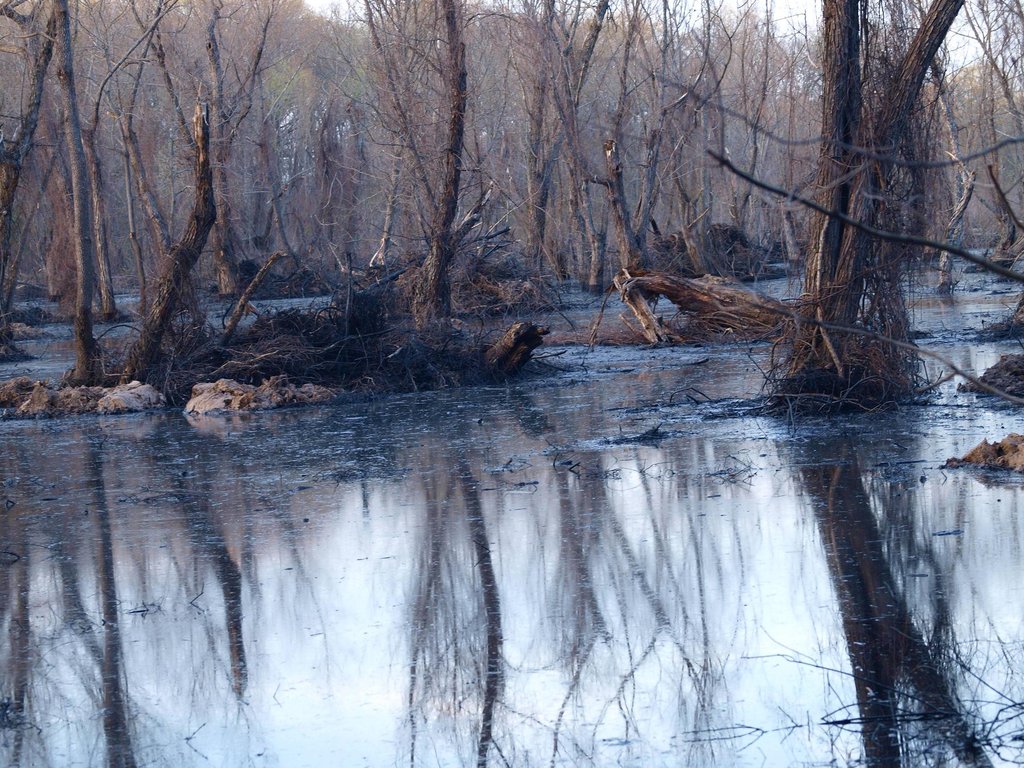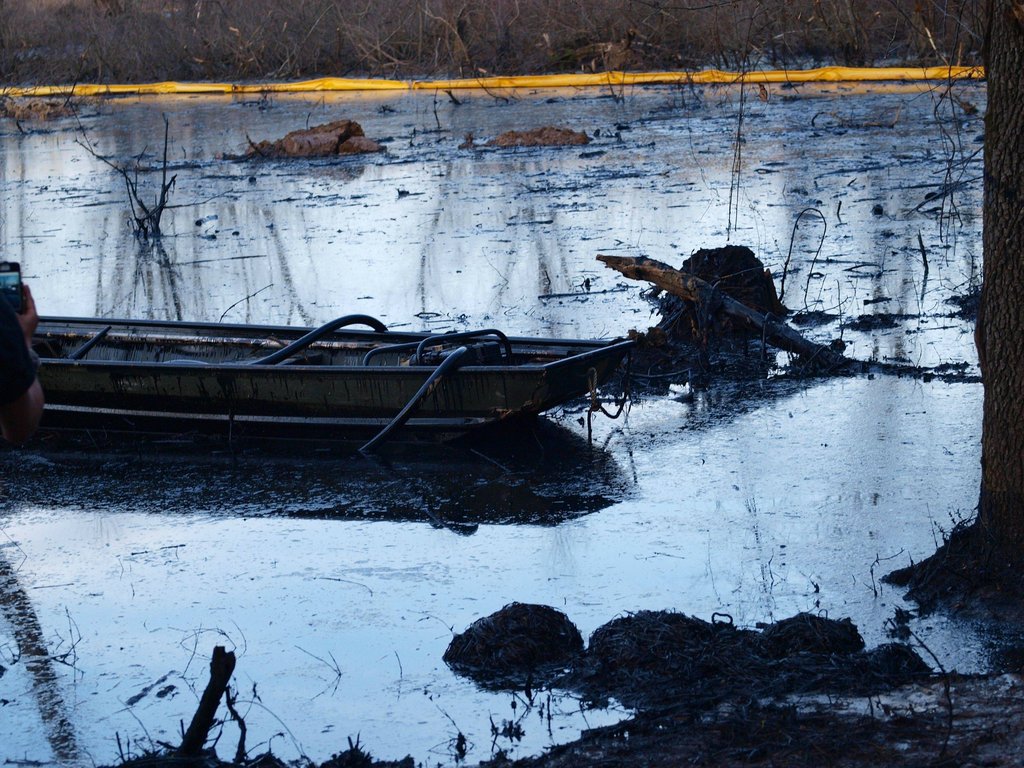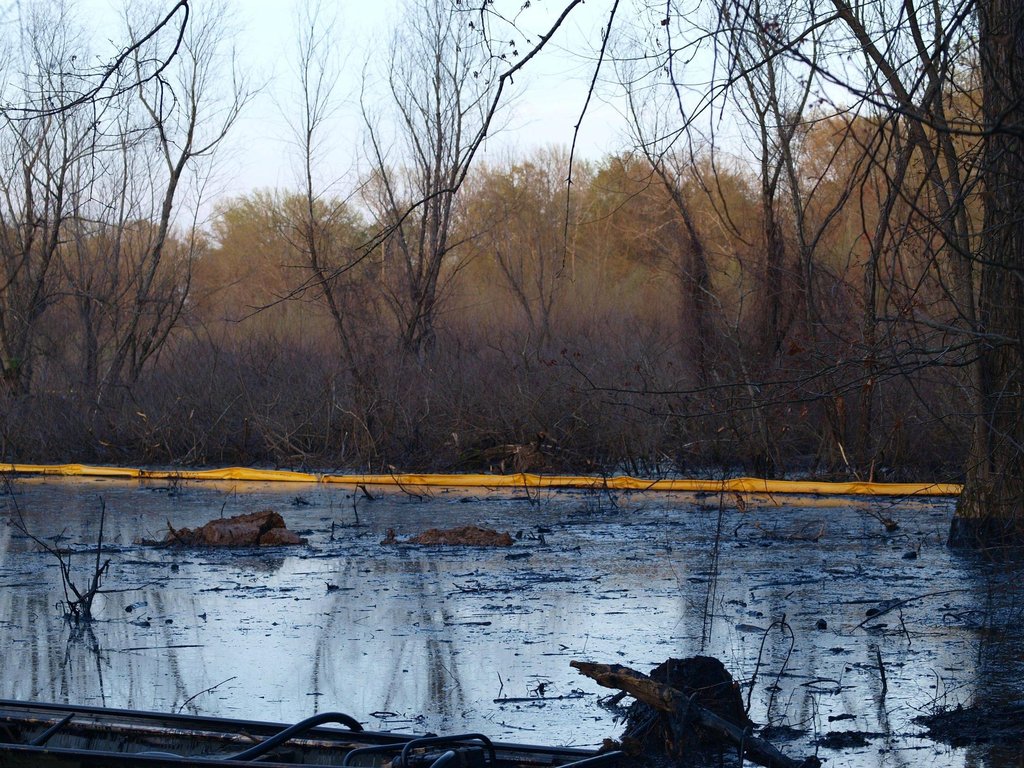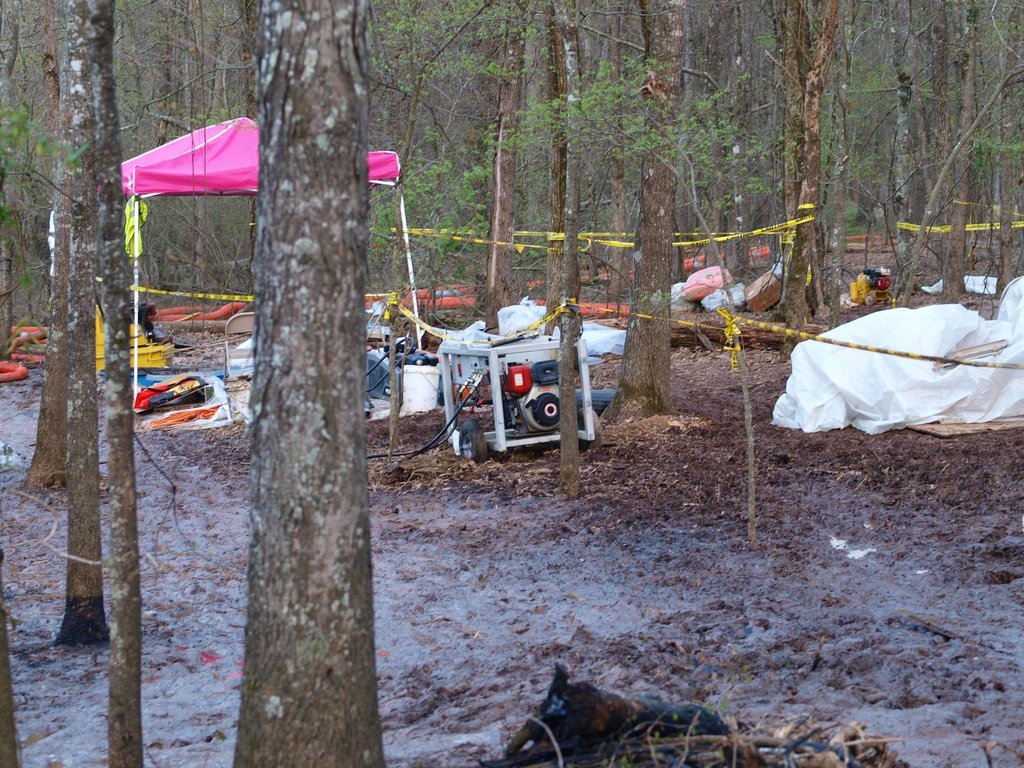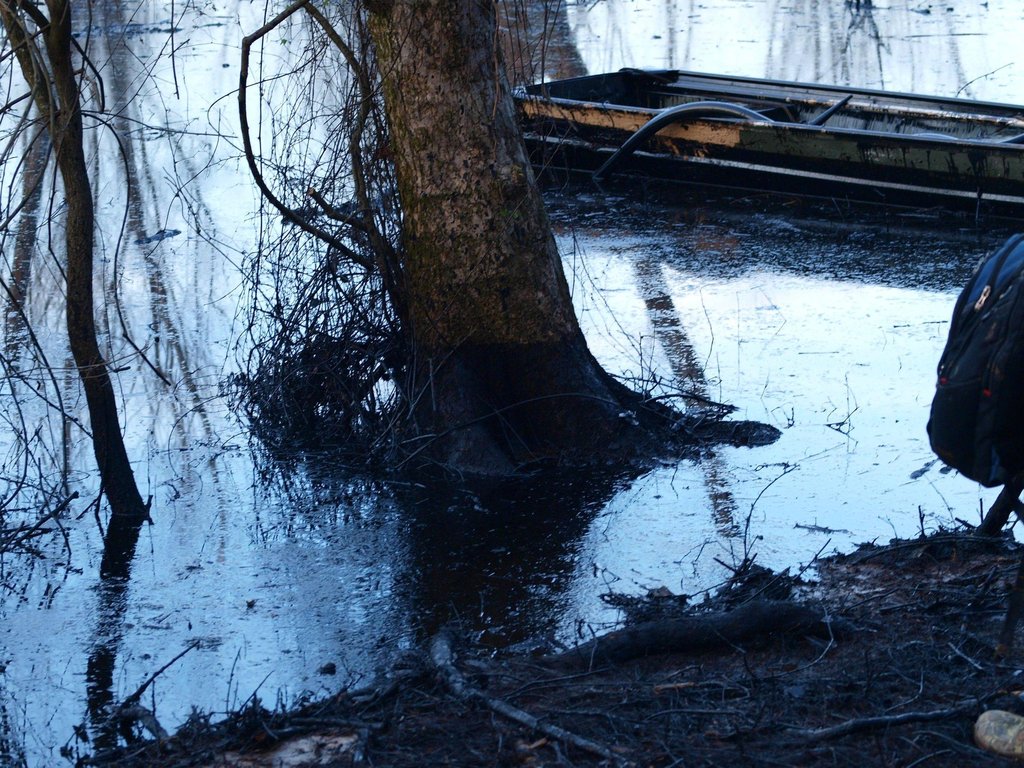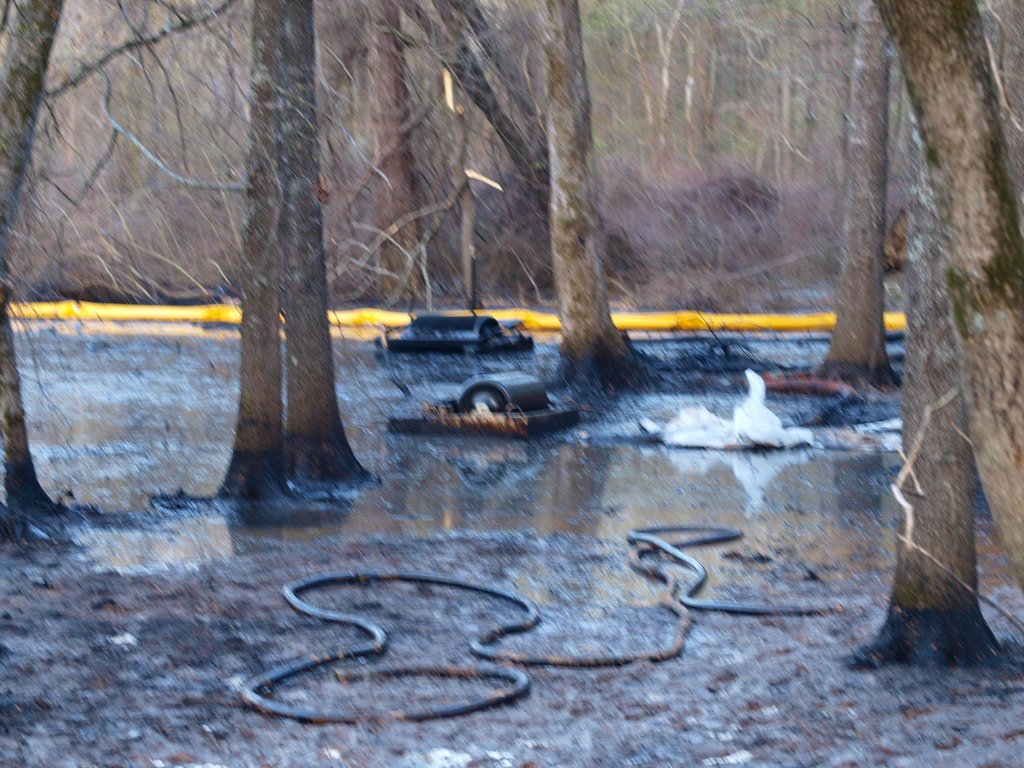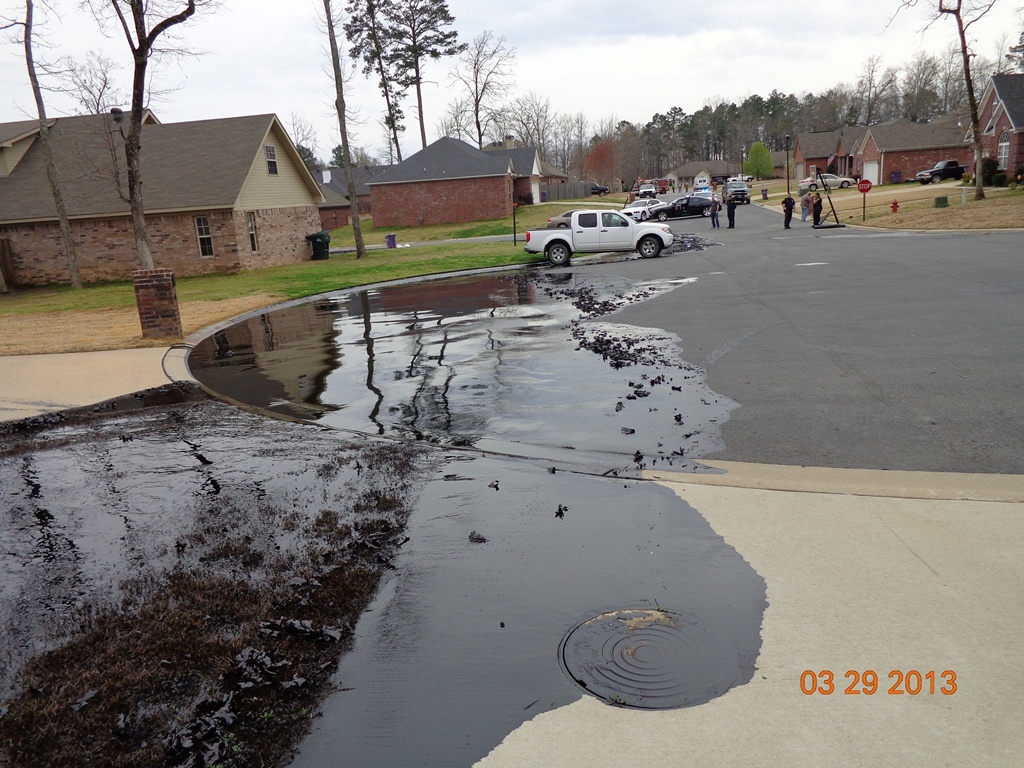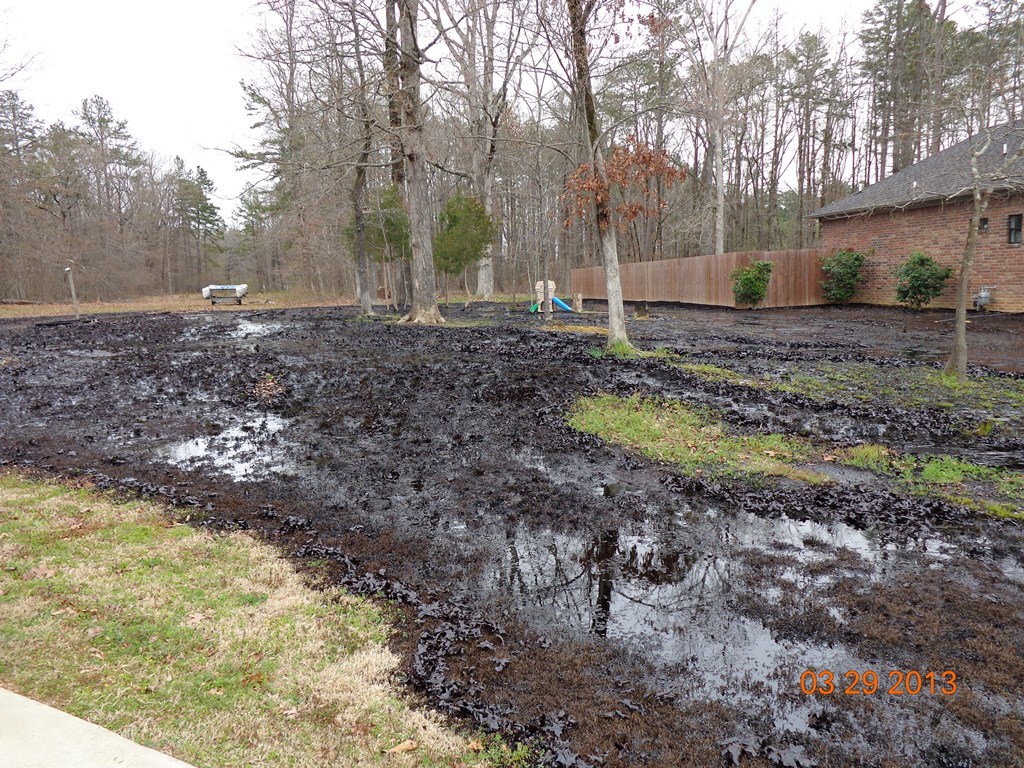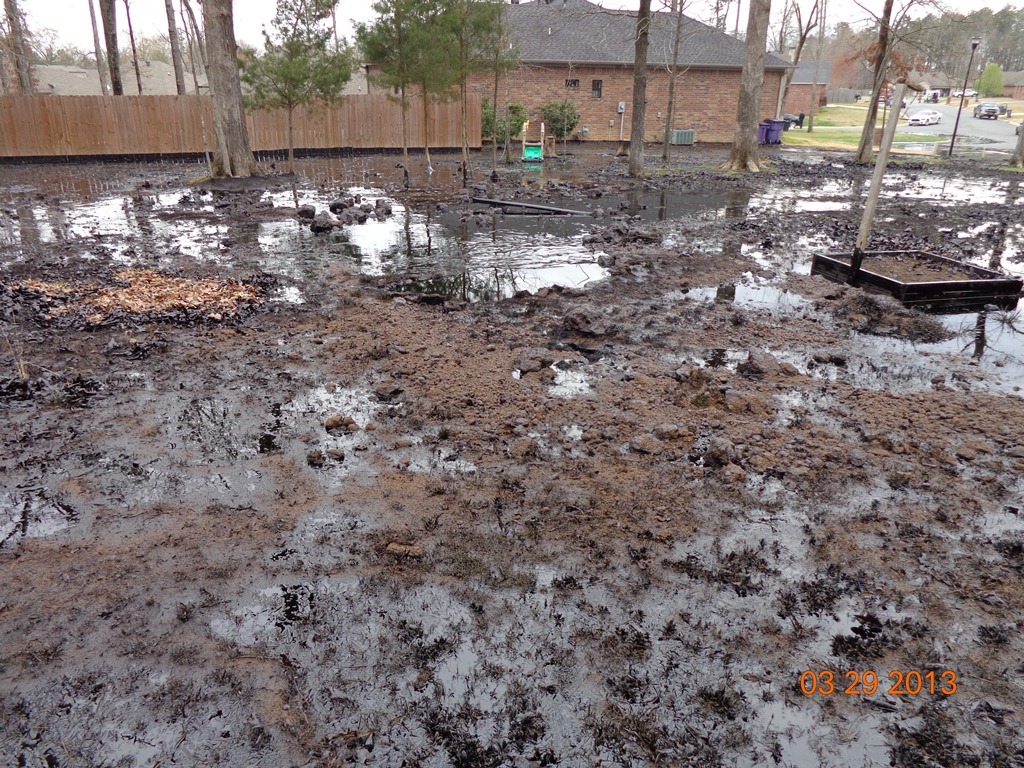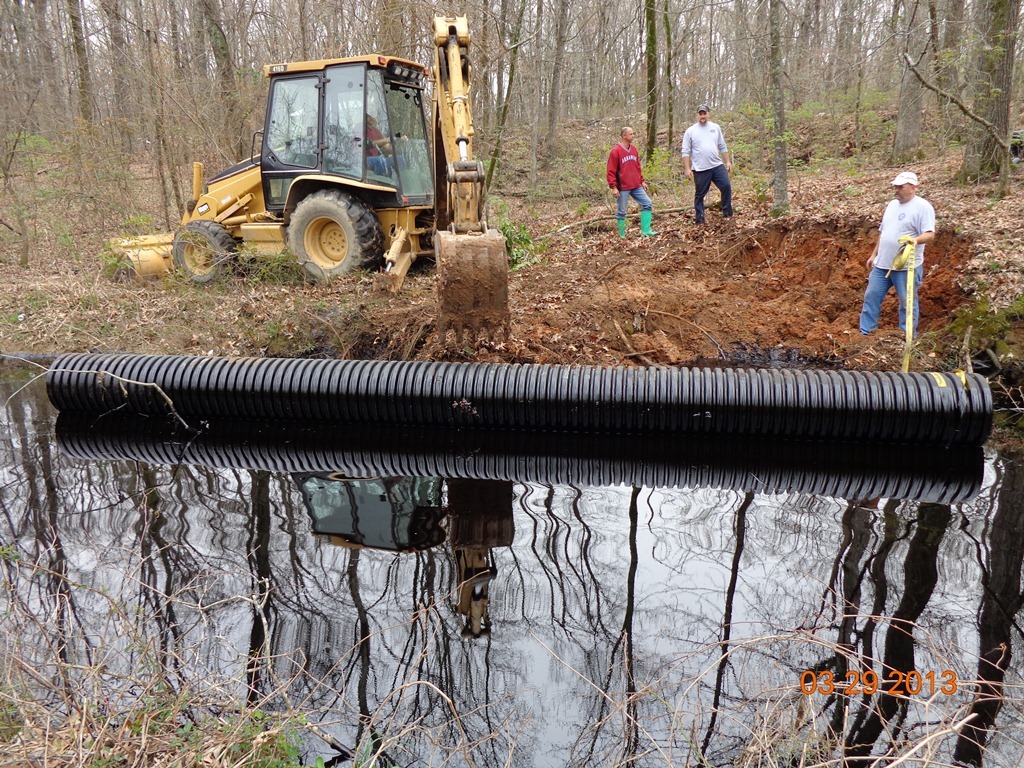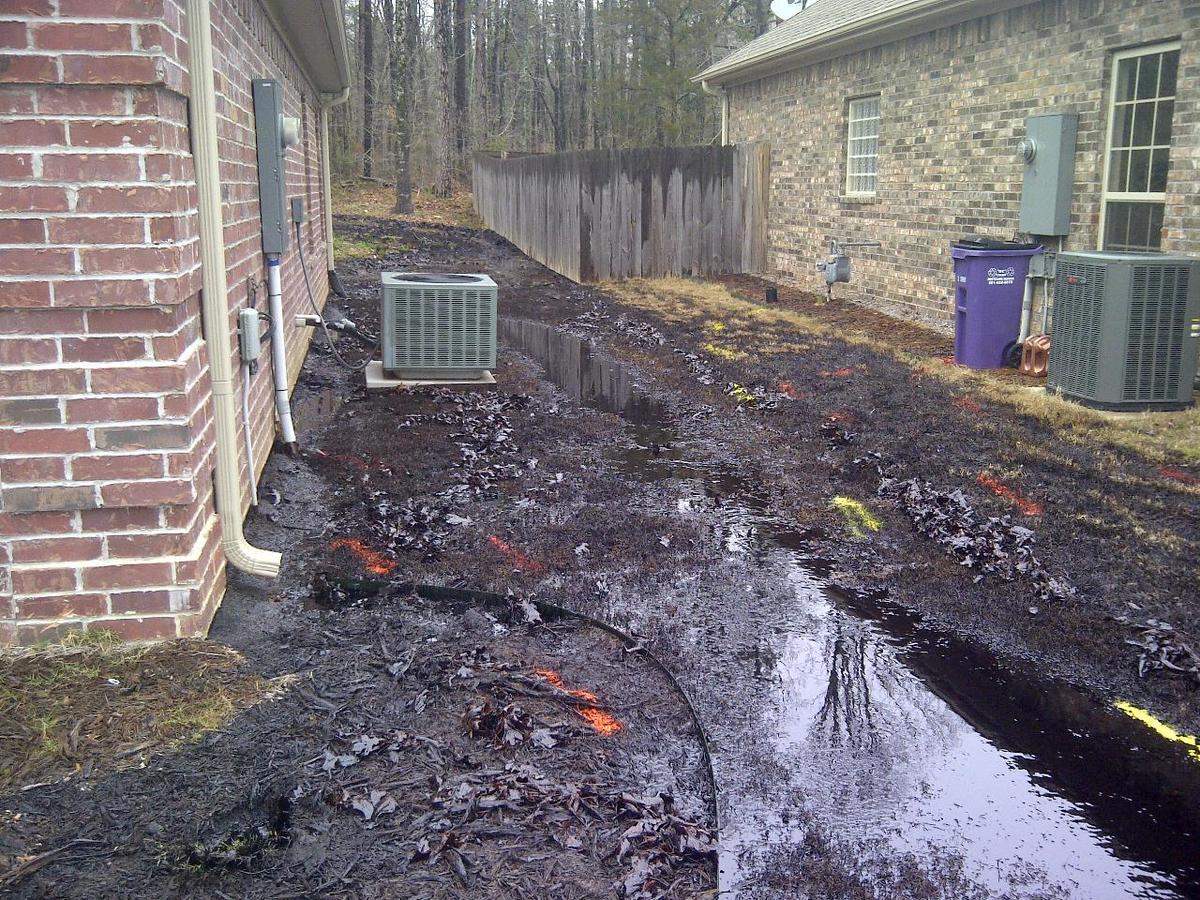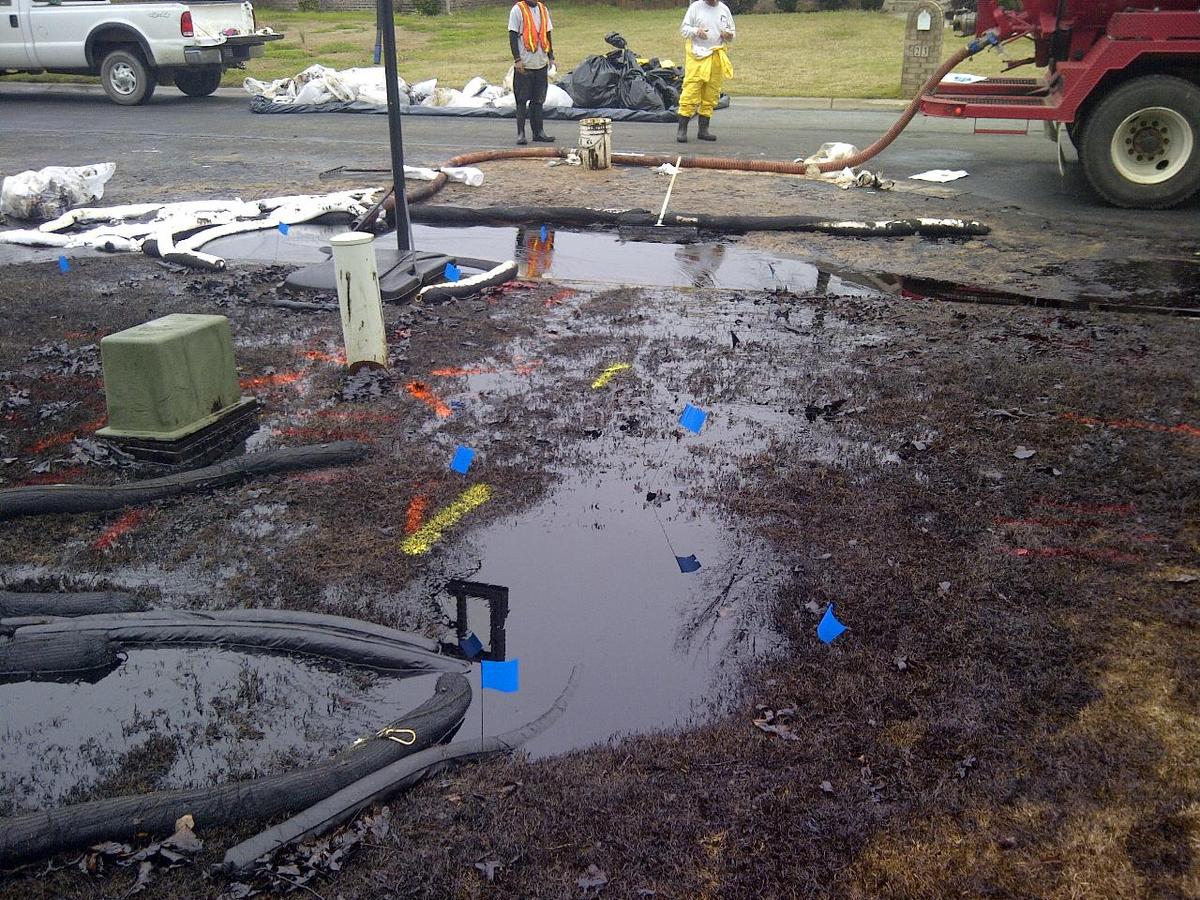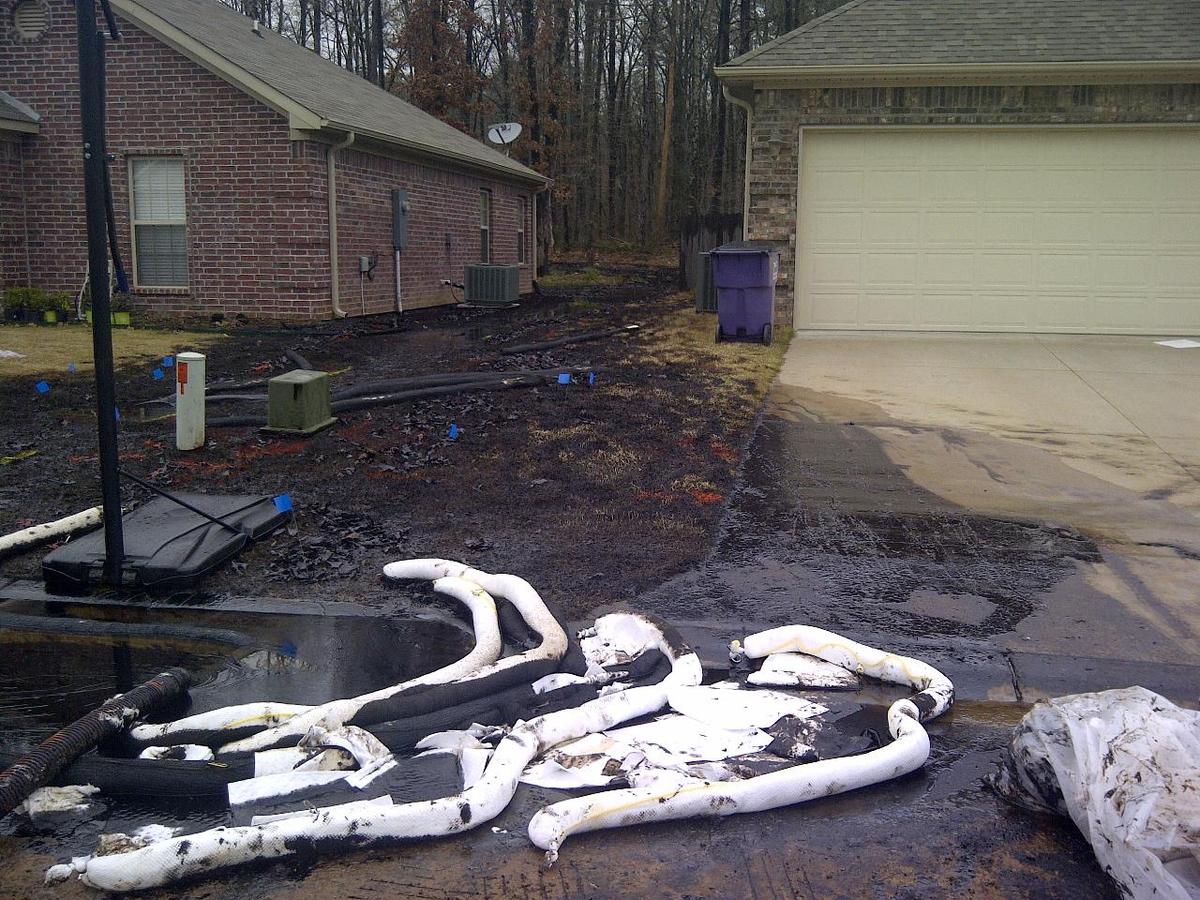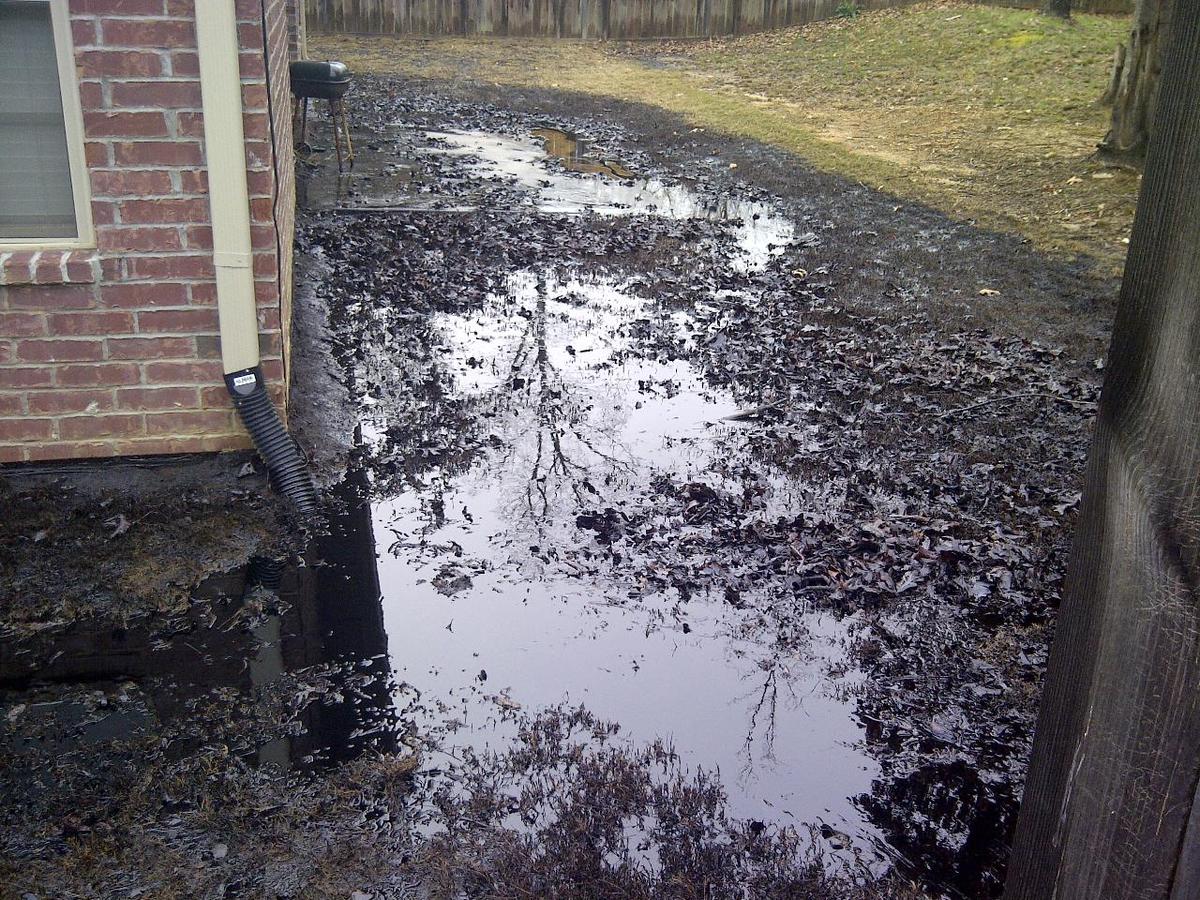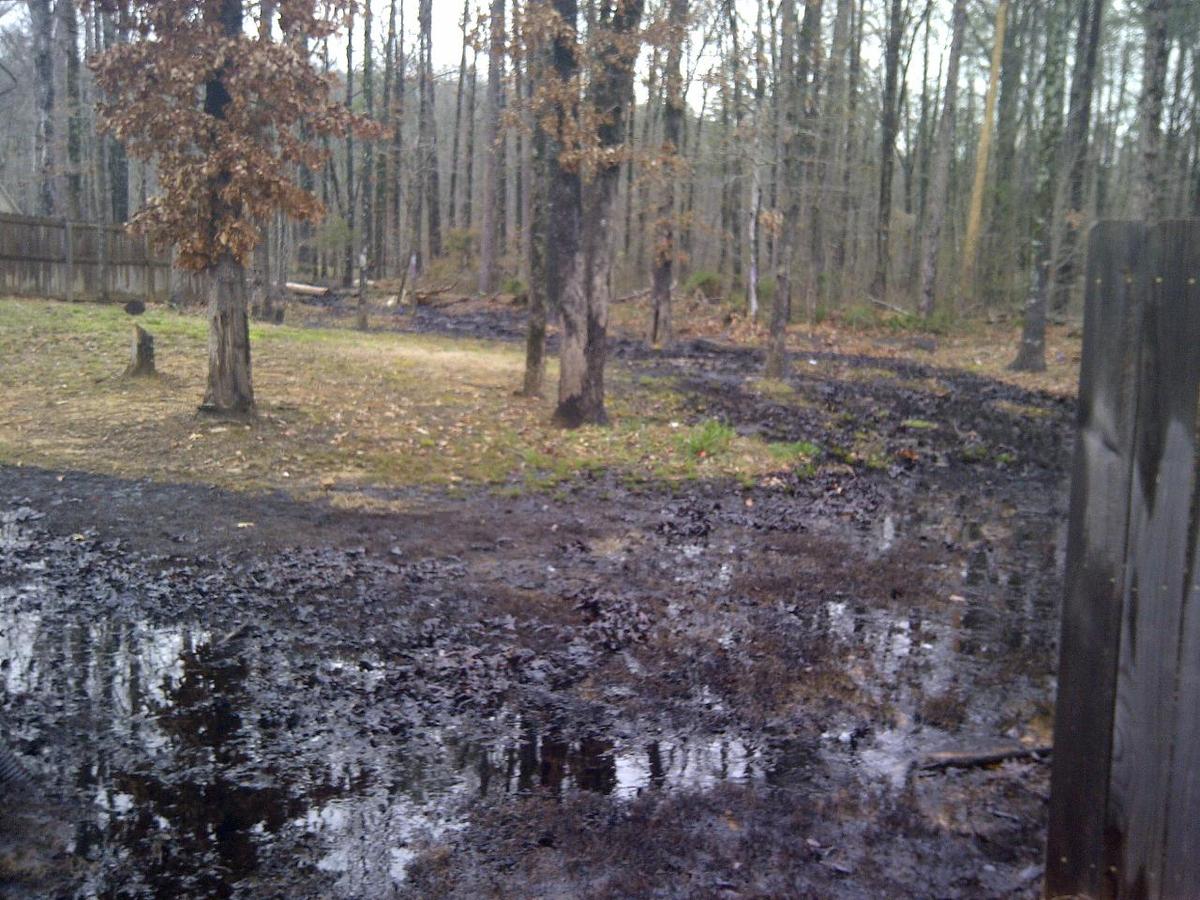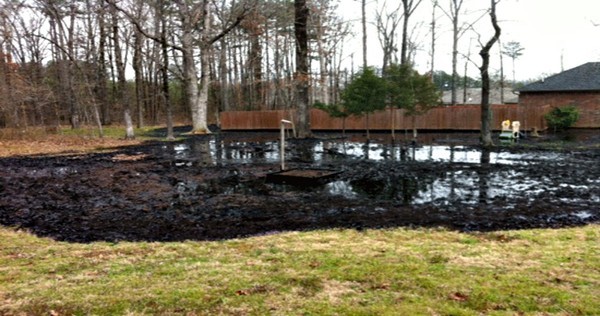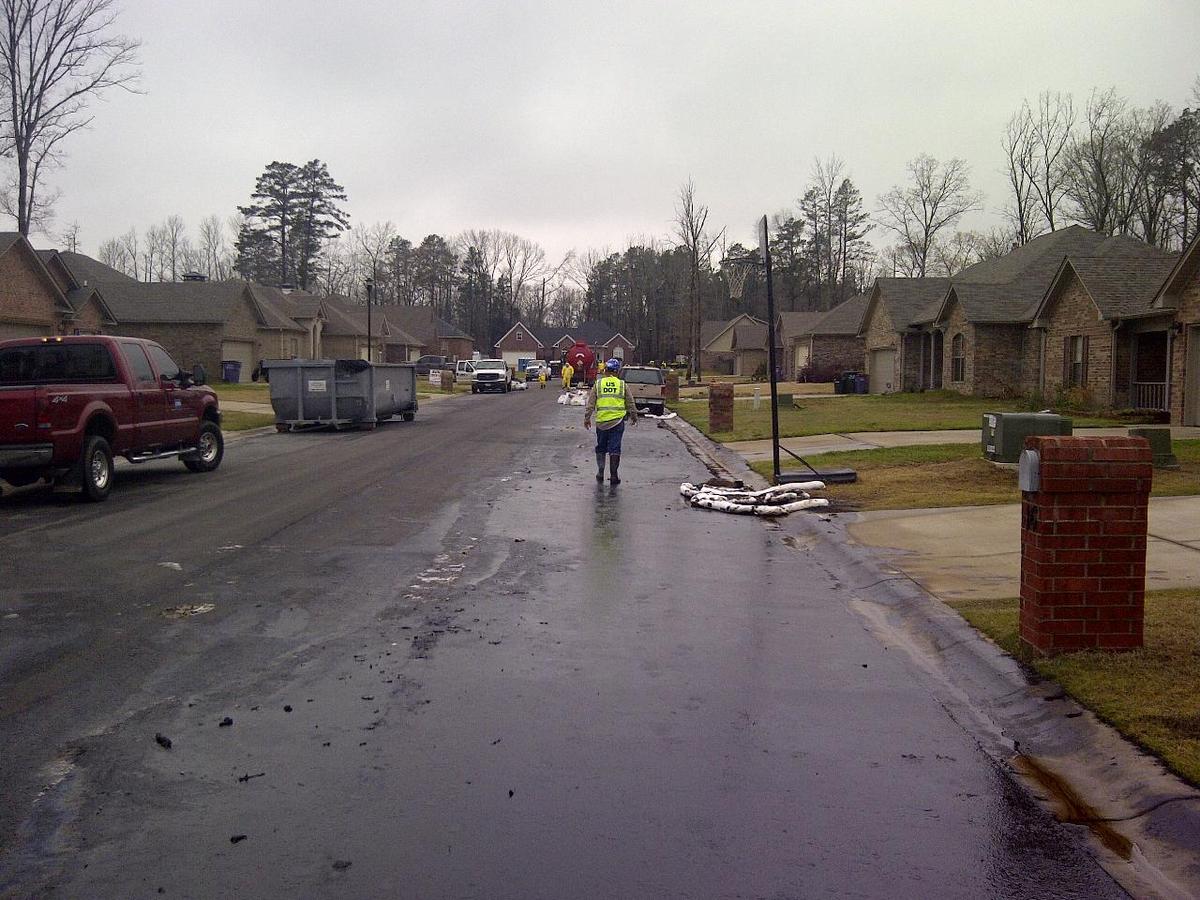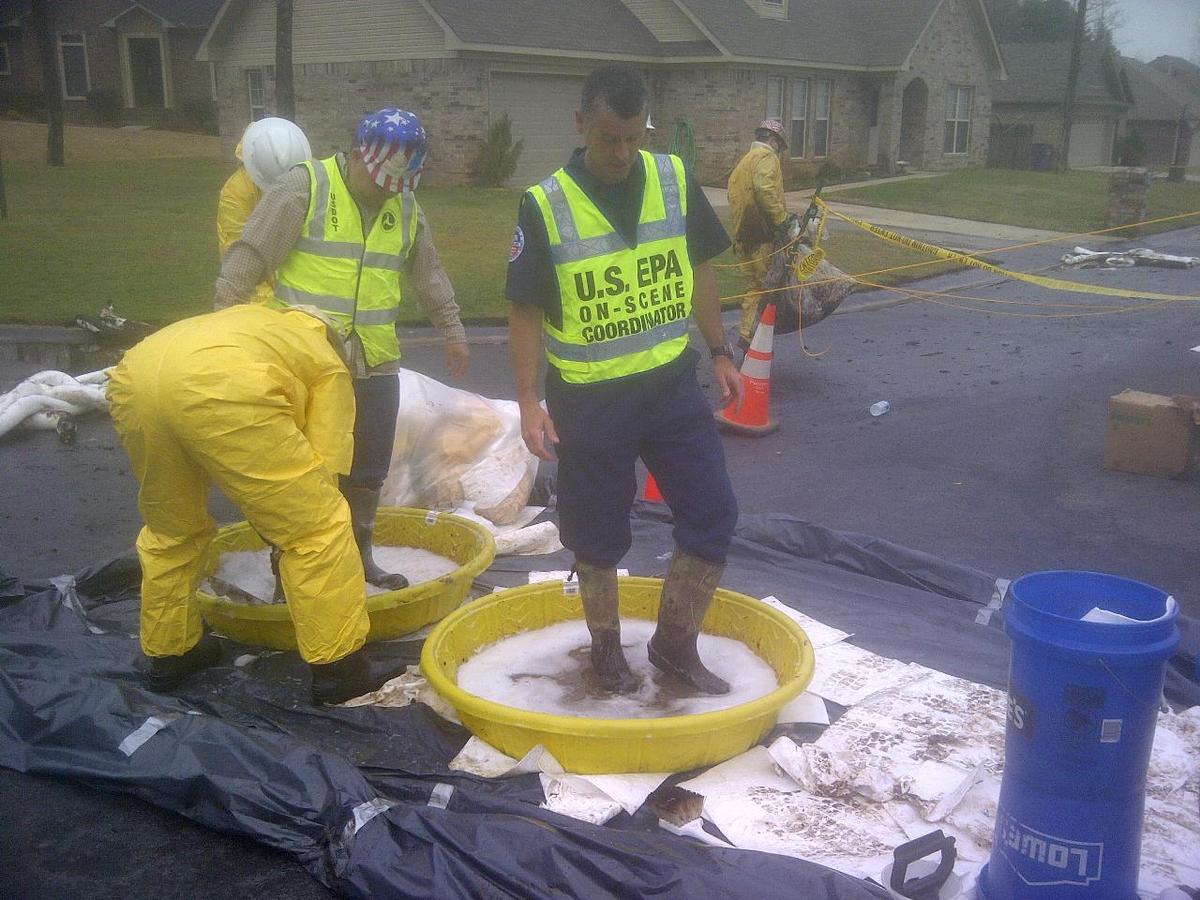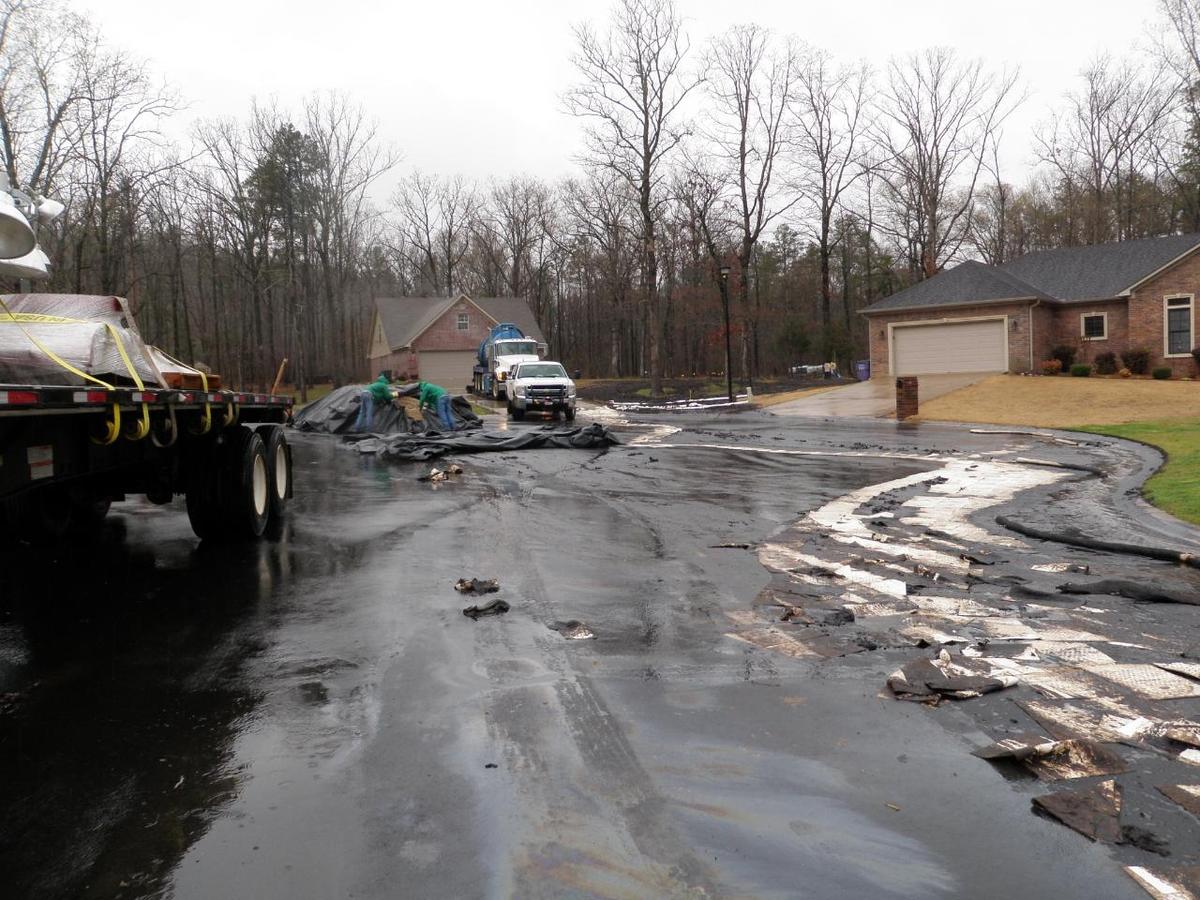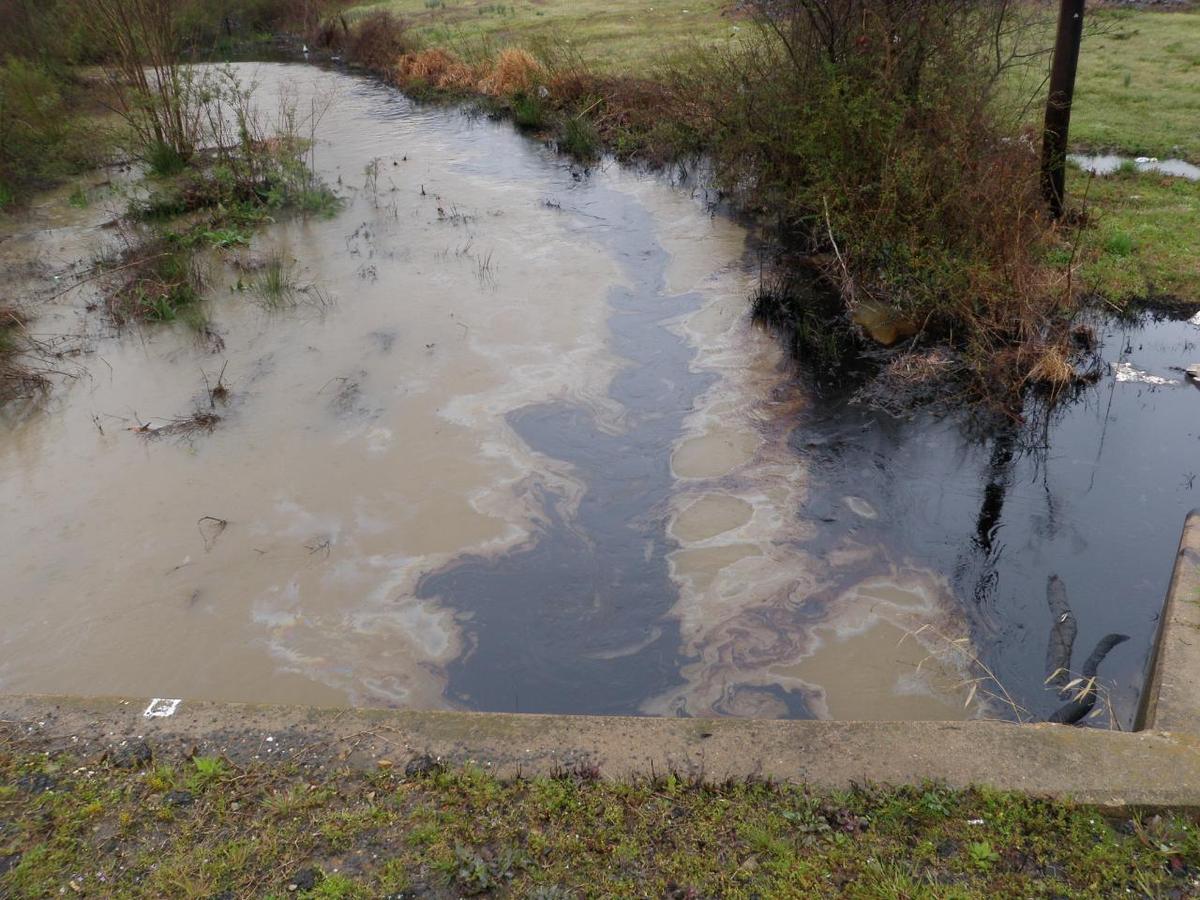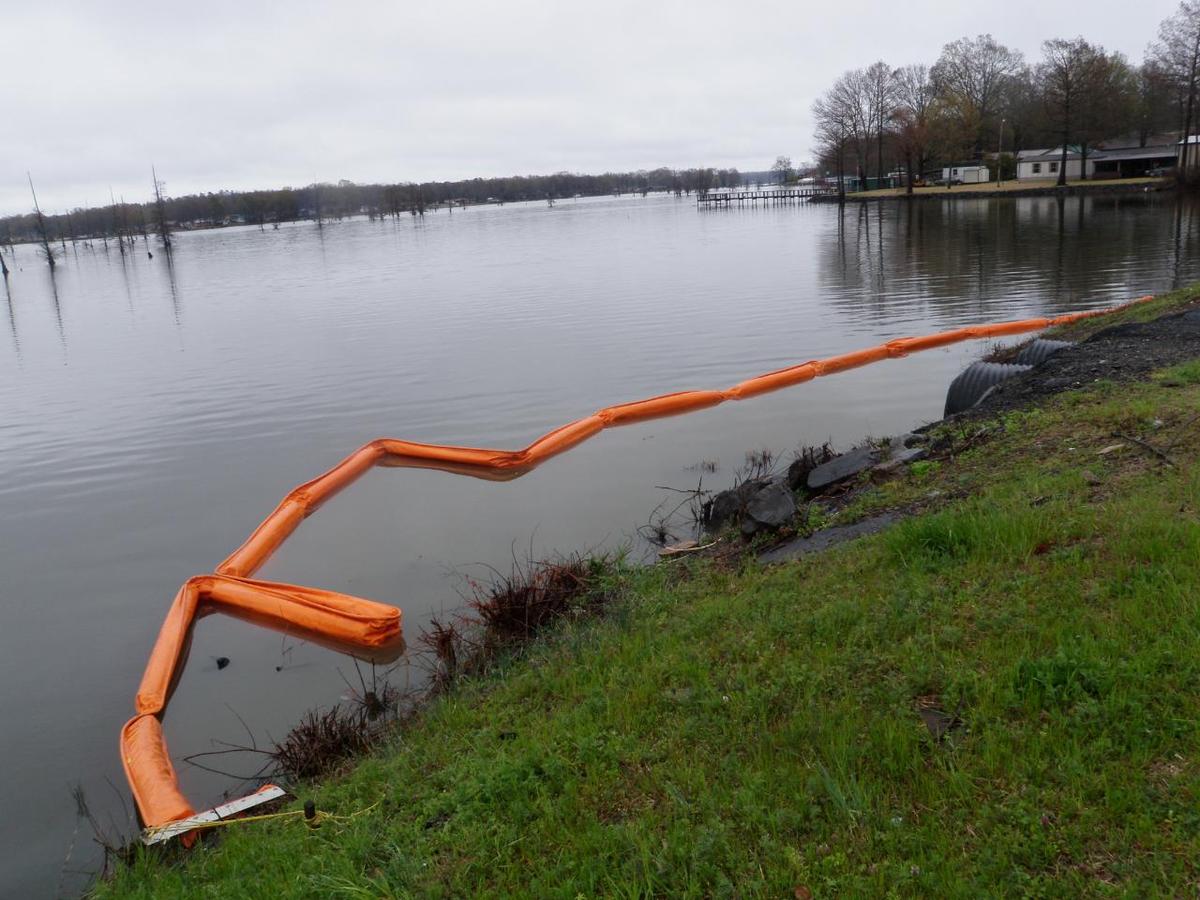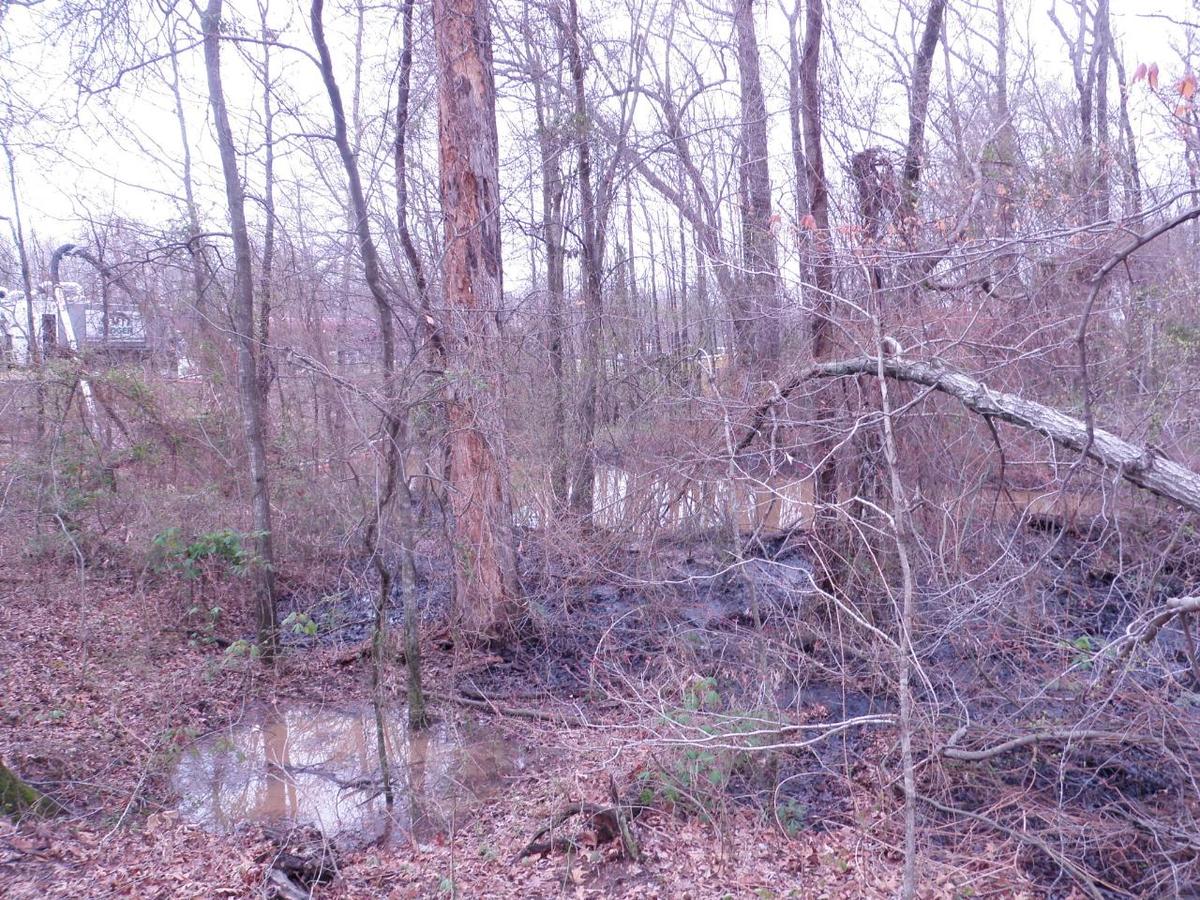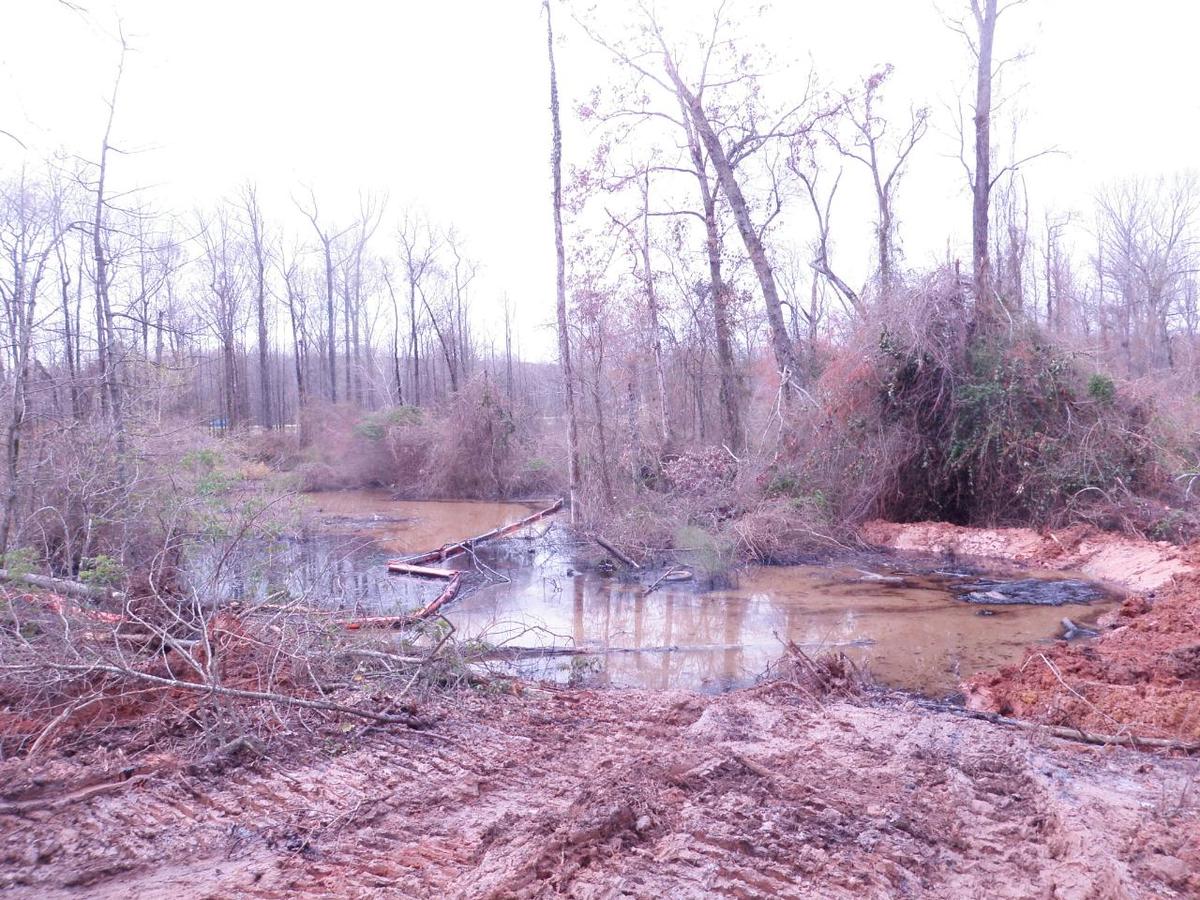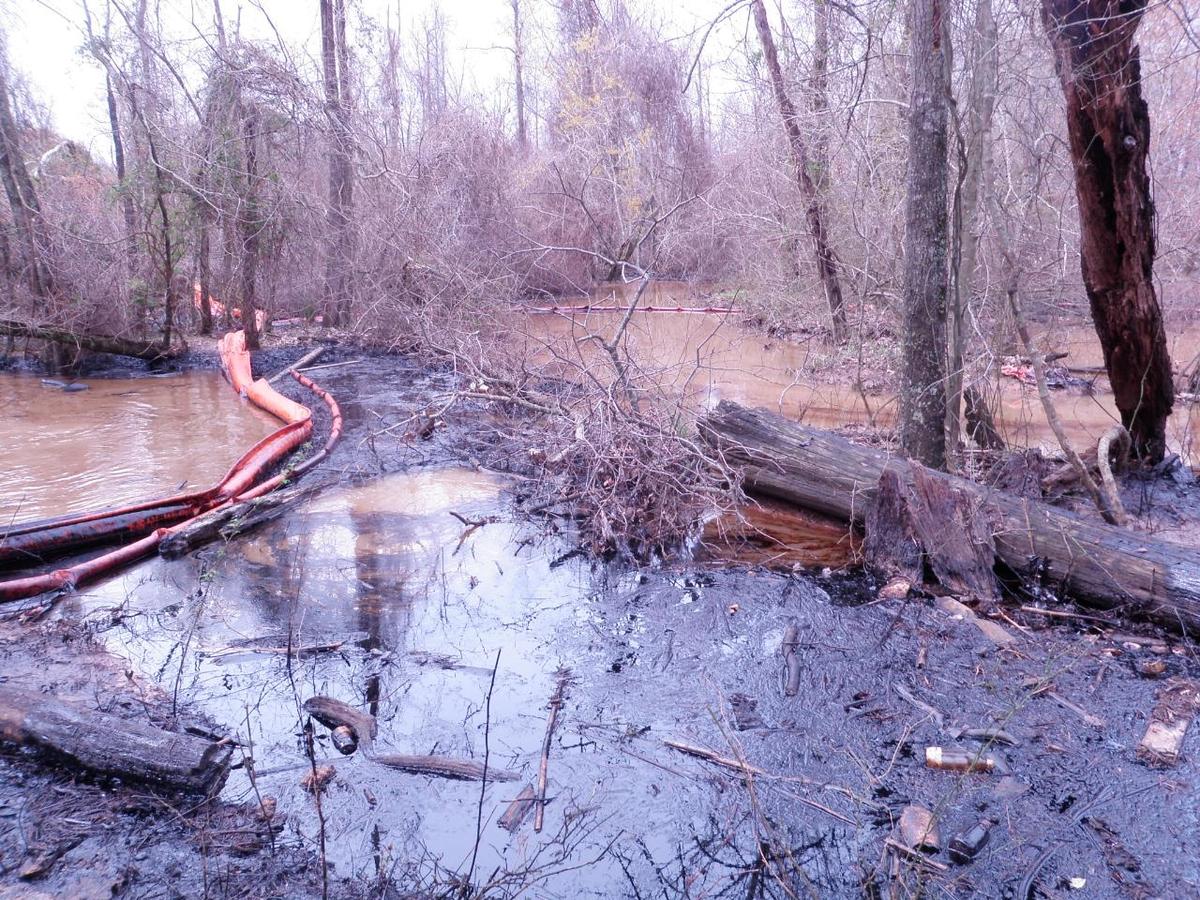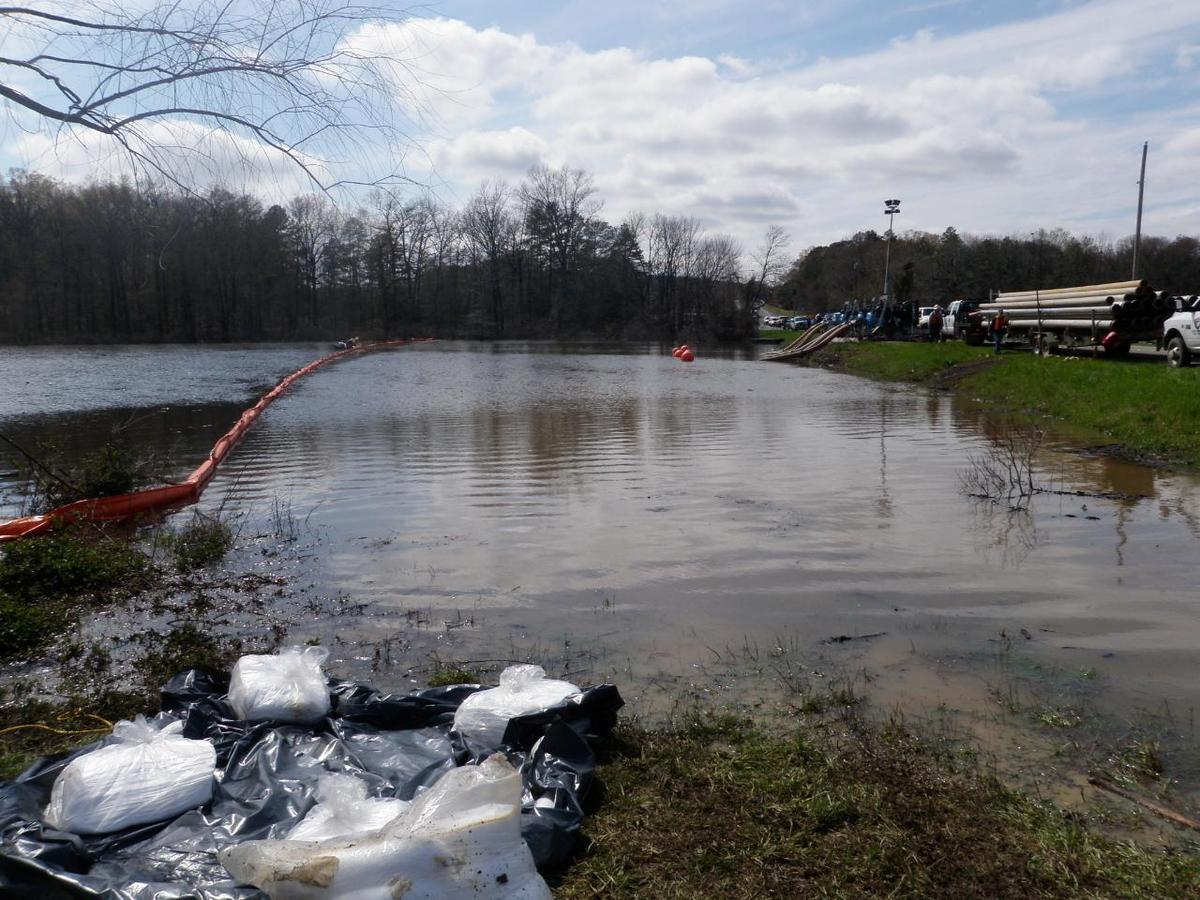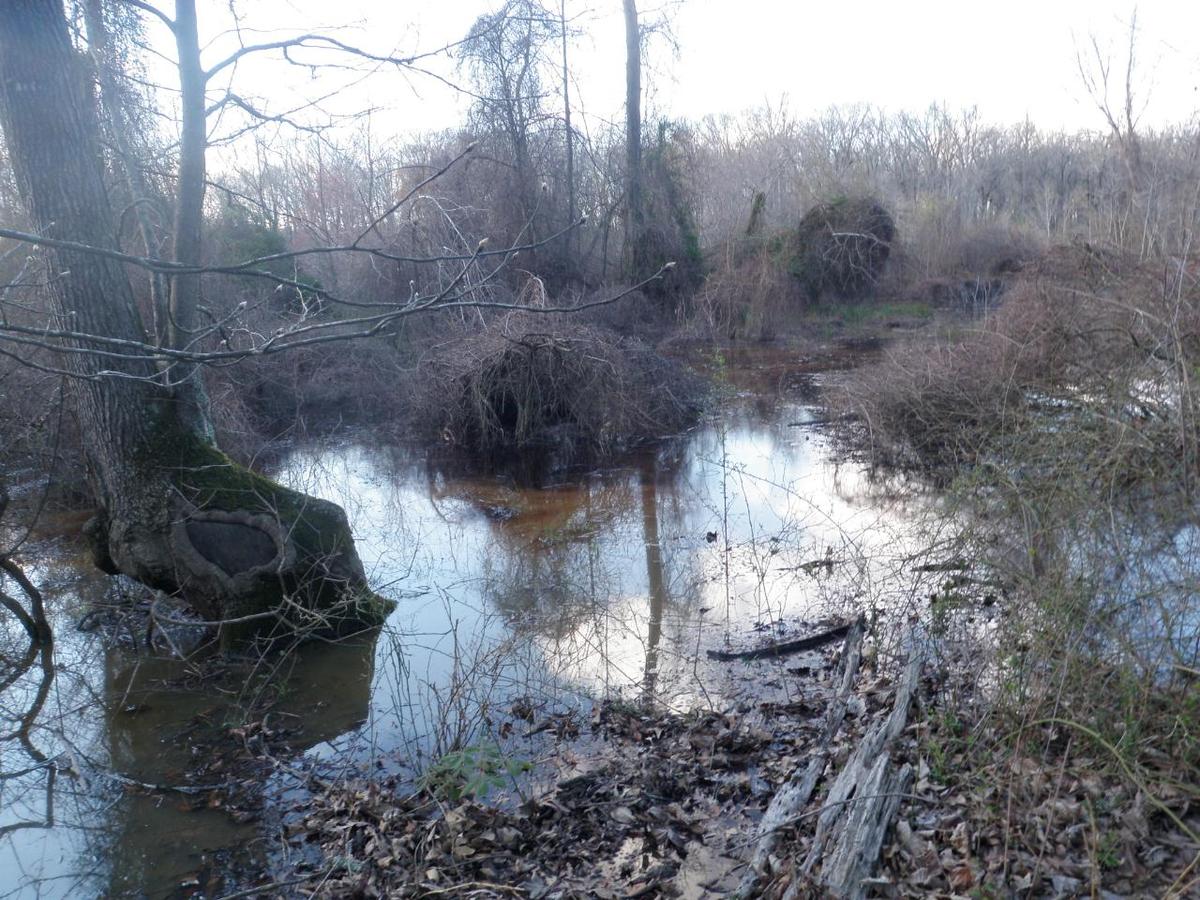In Greek legend, everytime the winged horse Pegasus struck his hoof to the Earth, an “inspiring spring burst forth.” Unfortunately for residents in Mayflower, Arkansas, when the Pegasus pipeline ruptured, the only thing bursting forth was a nasty tar sands oil spill.
On Friday afternoon, the Pegasus pipeline operated by Exxon Mobil ruptured, flooding an Arkansas neighborhood with thousands of barrels of Wabasca Heavy crude from the Athabasca tar sands in Alberta.
Here’s what you need to know about the spill, with links to some reporting on this awful event, which at very least ruined the holiday weekends of many Mayflower, Arkansas residents, many of whom didn’t even know the pipeline was running through their neighborhood.
What is Pegasus?
The 20-inch pipeline carries diluted bitumen – originating from the Alberta tar sands – for 858 miles from Patoka, Illinois to refineries in Nederland, Texas. It was built in the 1940s and can carry up to 95,000 barrels a day.
Pegasus was built to funnel crude from the Gulf Coast up to the Midwest, but the flow was reversed in 2006 to help relieve the tar sands crude bottleneck in Cushing, Oklahoma. (The same reason given by proponents for the construction of Keystone XL.)
It is worth noting that a similar line reversal has been proposed by Enbridge to potentially ship tar sands crude for Atlantic export from a port in Maine.
In 2009, Exxon Mobil successfully petitioned regulators to allow them to expand capacity on the pipeline from 65,000 barrels per day to 95,000 barrels per day, a nearly 50 percent increase.
Update 4/2: On DeSmog Canada, Carol explains the bizarre technicality that allowed Exxon Mobil to avoid paying into a federal oil spill cleanup fund for its use of Pegasus.
How bad is the spill?
In 45 minutes, the spill spread through the suburban neighborhood, filling the streets and covering lawns with dilbit.
Because of the dangerous vapors emitted from the dilbit, residents of at least 22 homes were forced to evacuate.
Here’s a firsthand video account of the dilbit running over lawns and streets.
The spill was first estimated by the EPA at 84,000 gallons, but already over 189,000 gallons of oil and water (combined) have been collected.
Greenpeace photographer Karen Seagrave has the best photos from the spill that we’ve yet seen.
Update 4/2: The spill’s impact on local wildlife is already being documented, as at least two ducks have been found dead, and at least a dozen more are oily. Carol has heartwrenching photos of volunteers cleaning ducks in her post.
Is it under control?
Cleanup crews scrambled to prevent the diluted bitumen (or dilbit) from reaching Lake Conway, an important local source of drinking water and a popular recreation spot. A local judge, who was responsible for declaring a state of emergency and is coordinating response efforts, told Lisa Song of InsideClimate News that they were successful in doing so.
Dodson said emergency crews led a “monumentally successful” effort to prevent the Exxon spill from entering nearby Lake Conway, a popular recreational area. First responders set up earthen dams to contain the flow of oil, he said, and crews are working to shore up the protections as rains continue to fall and complicate the cleanup operations.
Update 4/2: There are some troubling accounts from the ground of the cleanup efforts, however. Lisa Song from InsideClimate News is there on the scene and writes of how public officials are nowhere to be seen, and Exxon Mobil is clearly running the show, and limiting access to journalists and the public.
Along the same vein, on Mother Jones, Kate Sheppard has written about her frustrating interactions with Exxon’s staff and is properly chastising the company for its vague responses to earnest and important questions about the spill.
Update 4/3: Here on DeSmogBlog, Steve points out that the FAA has issued a “No Fly Zone” at ExxonMobil’s request, which will essentially keep out news copters and other sources of aerial photography.
Update: 4/3: Meanwhile, I took a closer look at Exxon’s history of paying for spill cleanup and damages, and asked whether we can really trust ExxonMobil to make it right for the victims of this spill.
Update: 4/6: Lisa Song from InsideClimate News has now been threatened with arrest for visiting the command center where federal authorities are working. Others in the media are reporting similar treatment.
Sign of things to come?
Just last week, we wrote about how the oil spill from a derailed train in Minnesota was being used by Keystone XL boosters as an argument for the pipeline. We sarcastically ended that post with a “sure, pipelines never spill,” linking to a catalog of multiple spills along existing stretches of the Keystone pipeline system.
Pegasus provides yet another example – on top of those Keystone spills and the so-called DilBit Disaster of Enbridge’s Line 6B – of how pipelines carrying tar sands crude are more susceptible to leaks and ruptures and spills. Here’s an earlier post on the many problems with tar sands pipelines.
Who is on this story?
We’ll update this story with any new developments, but here are some of the best pieces of reporting on the Pegasus spill thus far:
- Lisa Song at InsideClimate News was early on the story, and will continue to put this spill in context of tar sands expansion and the Keystone XL controversy.
- Kate Sheppard at Mother Jones on what Exxon is trying to hide from the public.
- Steven Mufson reported on the spill for the Washington Post, where there is also a startling slideshow.
- Local station KTHV has reactions from Mayflower residents.
Update 4/8: The first lawsuit has been filed by victims of the spill. The Associated Press reports on two women who live near the spill who are looking for compensation for “”a permanent diminishment in property value.”
Update 4/9: These recently released images show the scope of the damage has grown far beyond the nearby residential street:
Above Image Credit: Alyssa Martinez / Drew Crownover / Annie Dill / Alex Shahrokhi via Imgur.
The EPA‘s On Scene Coordinator also recently released images of the scene:
Image Credit: EPA On Scene Coordinator.
Here’s a video taken by activists who snuck onto the cleanup site:
Photo: AJ Zoltan on Facebook
Subscribe to our newsletter
Stay up to date with DeSmog news and alerts


